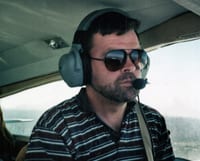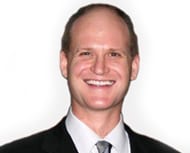Tribute to Early Roadster Engineers July 9, 2019
Tragic Plane Crash
Buried deep inside most Roadster firmware, is a tribute to three early Tesla employees and pioneers.
February 17, 2010, a small plane crash in Palo Alto CA, resulted in the death of three key Tesla employees. They were engineers involved in the Roadster project, and transitioning to the not yet released Model S. In fact, the men were headed to the Los Angeles suburb of Hawthorne, where the aerospace venture Space-X is based, and much of the design and engineering work for the Model S sedan was being done at the time. The pilot, Doug Bourn, a Roadster electrical engineer, along with fellow engineers Andrew Ingram, and Brian M. Finn, perished when Bourn’s Cessna 310 crashed in a residential neighborhood shortly after leaving Palo Alto (California) Airport.
A section of code in the Roadster firmware, can be accessed by setting the parking brake, pressing the “i” button in the upper left corner of the screen, then move to screen #2, and pressing the “Memorial” button which was available on the Information screen on 2.0 or later Roadsters.
Here is a brief bio on the three engineers:
Doug Bourn

As a senior electrical engineer, Bourn helped develop the Tesla Roadster that is the Palo Alto-based company’s showpiece. “Doug was a fine man, a superb engineer, an inspiration to those who knew him, and a big part of the success of Tesla Motors,” Tesla co-founder Martin Eberhard wrote in an e-mail to his former colleagues.
In a statement at the time, Elon said, “Bourn helped design and test the power electronics components in the Tesla Roadster and was deeply involved in the car’s development. He added, ”Doug, Brian, and Andrew were valued members of the Tesla family, they worked on something they believed in.”
Brian Finn
Brian, was a senior manager at the Volkswagen’s Electronics Research Lab in Palo Alto until joining Tesla in July, 2008. He was responsible for developing the interactive infotainment system in the Model S sedan slated to hit the road in 2012. “He brought overriding optimism and a pioneering spirit to the team developing the groundbreaking infotainment screen and user interface for the Model S,” Musk said.
“Brian was devoted to using technology to bring the car and its driver together.” “Brian was one of the most passionate automotive engineers I have ever met,” Klaus Schaaf, a friend of Finn’s, wrote in an email to Good Morning Silicon Valley writer John Murrell. “Cars, that was his world.”
Andrew Ingram
Andrew Ingram, 31 at the time, was an electrical engineer with Tesla for two and a half years, previously working for Dolby Labs.
He was passionate about electronics and exquisite audio systems, and was eager to lend a hand wherever it was needed, from marketing to manufacturing. It was at Tesla where the young engineer finally got a chance to combine all three of his passions: music, cars and “green” technology.
His assignments at Tesla included, but weren’t limited to, making sure the Model S’s elaborate electrical systems didn’t interfere with the stereo sound.
Coolant Pump and Fan Issues
Cooling elements such as pumps and fans have a shelf life too. There are
internal bearings that wear and can cause a number notable problems such as increased power draw, noise, and
heat production.
A failed/failing cooling component can reduce or inhibit charging and driving. We are into the
hottest months of the summer season, so your Roadster will be working overtime to keep the power train cool.















